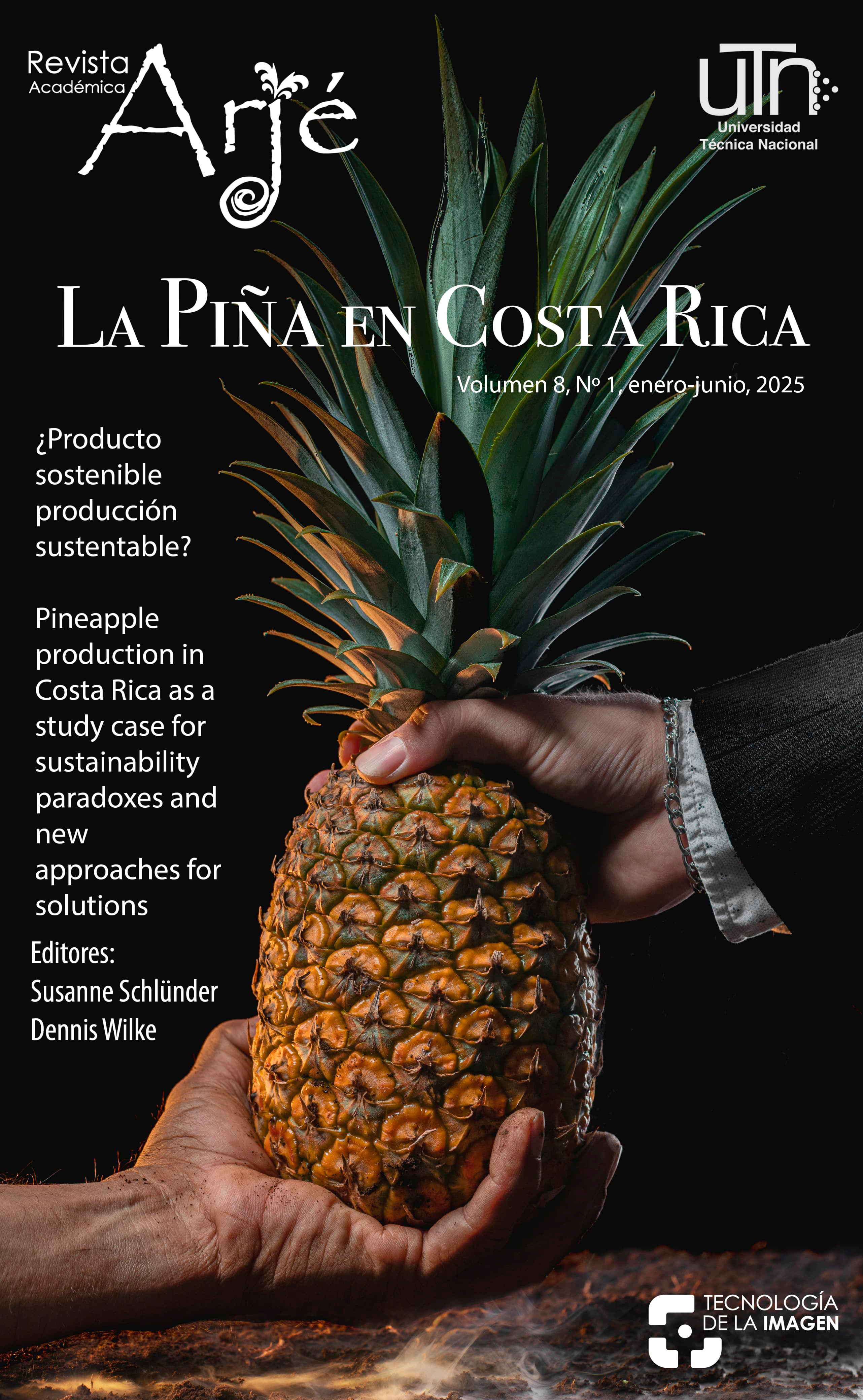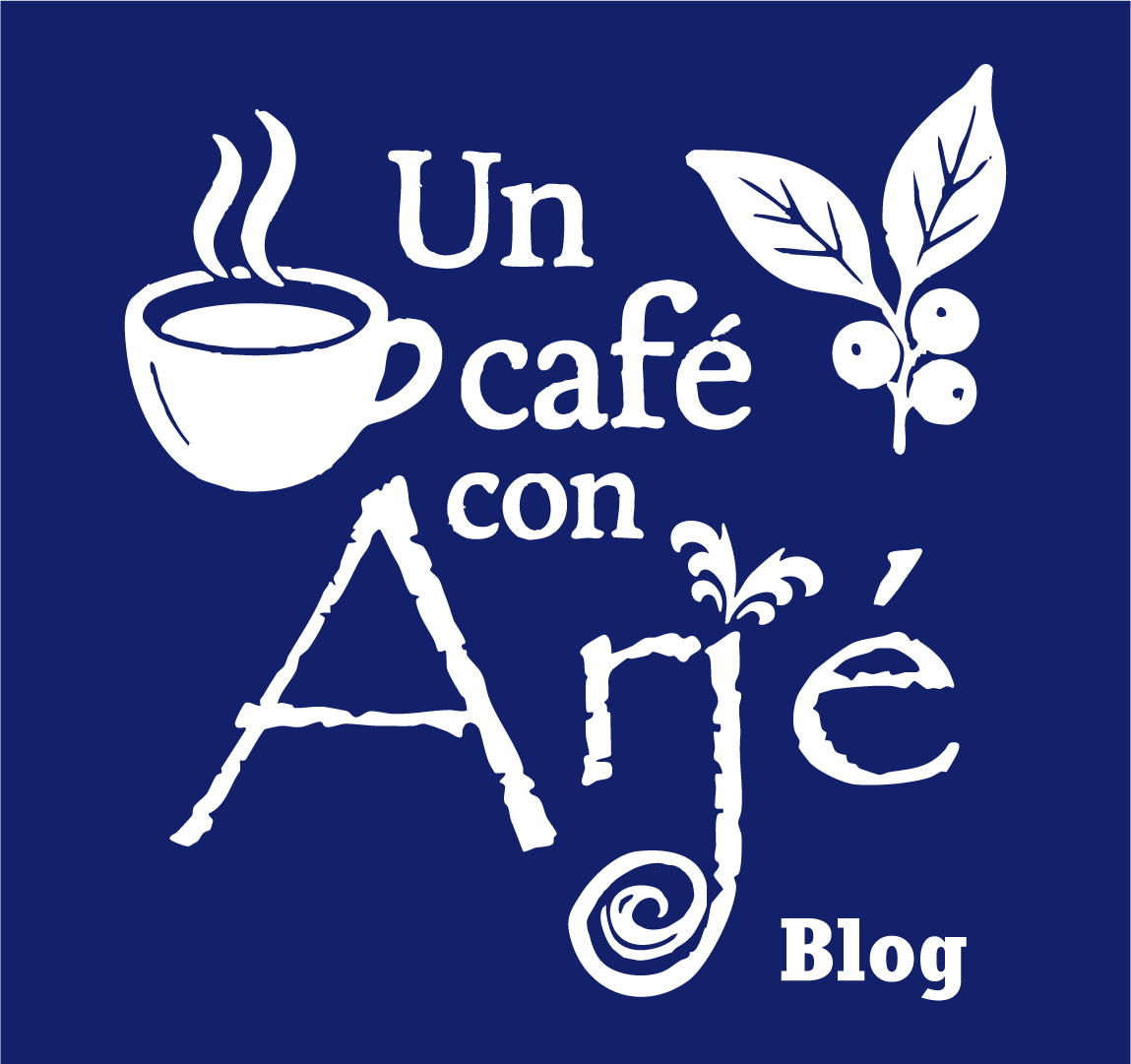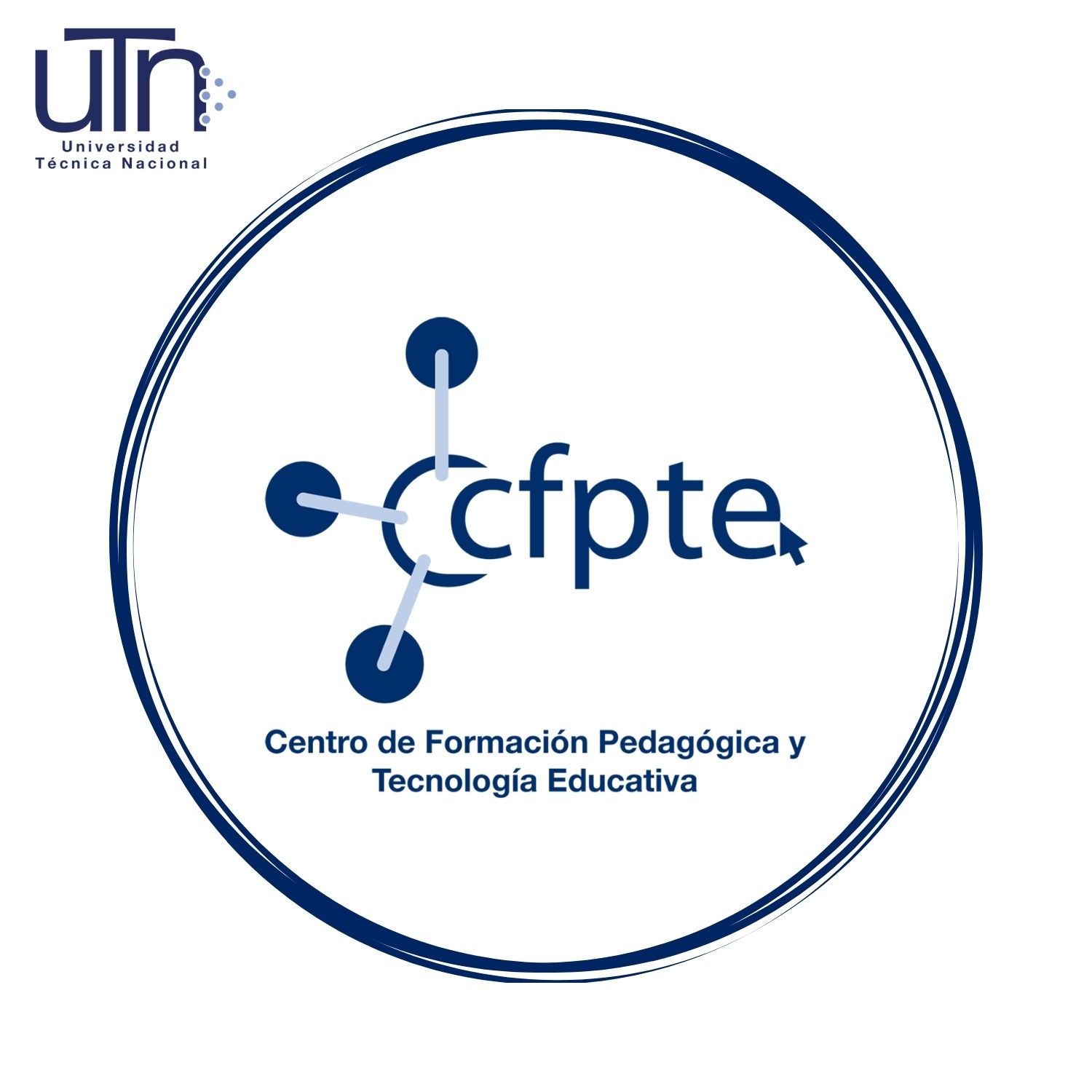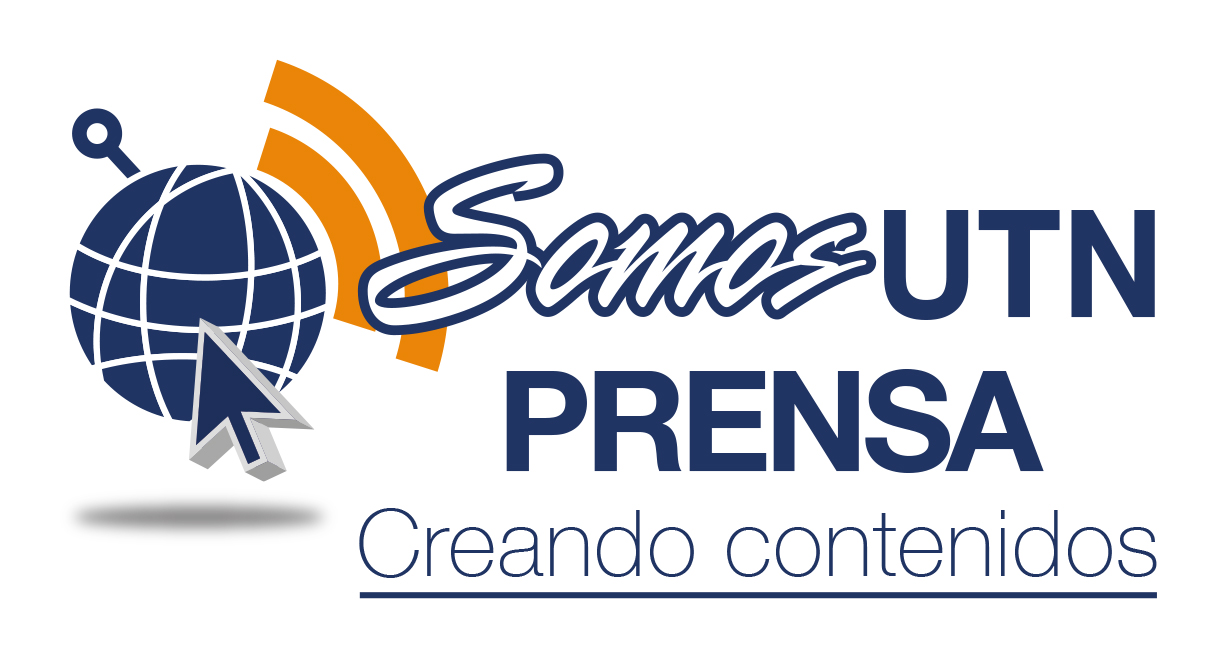Insights into community life from the "Capital of Pineapple"
DOI:
https://doi.org/10.47633/97bajk28Keywords:
community life, ecology, local livelihoods, rural development, socio-environmental conflictAbstract
This paper offers a contextualization of some facets of community life in Pital, the Costa Rican border district that has established itself as one of the world's leading pineapple production sites. Based on an interview-based qualitative approach involving local key informants and low-income mothers, it examines the historical, cultural, and subjective elements associated with this production model and its impact on collective life. It discusses how the tradition of agrarian capitalism at its most powerful has transformed the community landscape, accelerated processes of social change, and affected the collective experience of the community.
Downloads
References
Abarca Vásquez, C. A. (2011). Historia de San Carlos 1890-1950. Servicios Gráficos S. A.
Acuña González, G. (2009). De la producción a la expansión: Principales características, impactos, retos y desafíos. Asociación de Iniciativas Populares Ditsö.
Alvarado Briceño, S., Benavides Espinoza, J., Calvo Rojas, J., Carrizales Alvarado, A., Uris Espinoza, G., Hernández Fallas, S., Ortega Meléndez, R. C., & Sancho Murillo, D. (n.d.). Diagnóstico situacional del Cantón de San Carlos.
Arias Ramírez, R., Sánchez Hernández, L. (2012). Patrones de Localización, Concentración y Evolución del Empleo Industrial en el Gran Área Metropolitana (GAM) de Costa Rica. Ciencias Económicas, 30(2), 131–154. https://doi.org/10.15517/rce.v30i2.8011
Aschemeyer, F. (2019). Perception of the paternal role and relationship formation with their infants among rural and urban fathers in the region of Guanacaste, Costa Rica [Master thesis, Universität Osnabrück].
Aschemeyer, F., Rosabal-Coto, M., Storm, S., & Keller, H. (2020). The role of culture and caregivers’ formal education for babies’ learning environments: The case of two Costa Rican communities. Journal of Cross-Cultural Psychology, 52(2), 103–128. https://doi.org/10.1177/0022022120981715
Asociación de Iniciativas Populares Ditsö. (2018). Piña y conflicto socioambiental en Costa Rica: 40 años sin solución. https://www.ditso.org/wp-includes/pdf/pina-y-conflicto-socioambiental-en-costa-rica-40-anos-sin-solucion.pdf
Avendaño Hernández, K. R., Ramírez Mora, K. P., & Segura Hernández, A. G. (2014). Más allá del trabajo asalariado: implicaciones sociales en el uso del tiempo no remunerado de trabajadoras y trabajadores vinculados al monocultivo de piña en la comunidad de Pital de San Carlos en los años 2012-2013 [Licenciatura tesis, Universidad de Costa Rica].
Bock, J. (2010). An evolutionary perspective on learning in social, cultural, and ecological context. In D. F. Lancy, J. Bock, & S. Gaskins (Eds.), The anthropology of learning in childhood (pp. 11–34). AltaMira Press.
Braun, V., & Clarke, V. (2021). Thematic analysis: A practical guide. SAGE. https://uwe-repository.worktribe.com/output/9004204
Brenes Camacho, G. (2009). Cambio demográfico y heterogeneidad geográfica 1978-2008. Investigación de base. Decimoquinto Informe Estado de la Nación en Desarrollo Humano Sostenible.
Carazo, E., & Aravena, J. (2016). Condiciones de producción, impactos humanos y ambientales en el sector piña en Costa Rica. Asociación Regional Centroamericana para el Agua y el Ambiente. https://www.oxfam.de/system/files/condiciones_laborales_y_ambientales_de_la_pina_en_costa_rica_-_mayo_2016.pdf
Carlson, V. J., & Harwood, R. L. (2014). The precursors of attachment security: behavioral systems and culture. In H. Otto & H. Keller (Eds.), Different faces of attachment: cultural variations on a universal human need (pp. 278–304). Cambridge University Press. https://doi.org/10.1017/cbo9781139226684.016
Castro Méndez, M., Carvajal Loaiza, K., Chacón Rojas, E., & Fernández Ávila, K. (2020). Relaciones laborales complejas: el proceso de producción de la piña en la zona norte de Costa Rica. Programa Estado de la Nación.
Castro Sánchez, S., & Guido, F. (2001). Urbanización fuera del área metropolitana en Costa Rica: aspectos generales y estudio de caso. Revista Pensamiento Actual, 2(3), 54–65.
Delgado‐Romero, E. A., Singh, A. A., & De Los Santos, J. (2018). Cuéntame: The promise of qualitative research with Latinx populations. Journal of Latina/O Psychology, 6(4), 318–328. https://doi.org/10.1037/lat0000123
Durán-Delgado, E. (2024). Caregiving in contexts of poverty and migration in three ecosocial settings in Costa Rica [Doctoral thesis, University of Osnabrück].
Fincher, C. L., Thornhill, R., Murray, D. R., & Schaller, M. (2008). Pathogen prevalence predicts human cross-cultural variability in individualism/collectivism. Proceedings of the Royal Society B: Biological Sciences, 275, 1279-1285.
Galor, O., & Özak, Ö. (2016). The agricultural origins of time preference. American Economic Review, 106(10), 3064–3103. https://doi.org/10.1257/aer.20150020
Gelfand, M. J., Raver, J. L., Nishii, L., Leslie, L. M., Lun, J., Lim, B. C., Duan, L., Almaliach, A., Ang, S., Arnadottir, J., Aycan, Z., Boehnke, K., Boski, P., Cabecinhas, R., Chan, D., Chhokar, J., D’Amato, A., Ferrer, M. S., Fischlmayr, I. C., . . . Yamaguchi, S. (2011). Differences between tight and loose cultures: a 33-Nation study. Science, 332(6033), 1100–1104. https://doi.org/10.1126/science.1197754
González Gamboa, V. (2019). La piña en Costa Rica: ubicando conflictos ambientales en áreas silvestre protegidas y ecosistemas de humedal. Programa Estado de la Nación. https://estadonacion.or.cr/wp-content/uploads/2019/12/Gonzalez-V.-2019.-Pin%CC%83a.pdf
Harwood, R. L., Schöelmerich, A., Schulze, P. A., & Gonzalez, Z. A. (1999). Cultural differences in maternal beliefs and Behaviors: A study of Middle‐Class Anglo and Puerto Rican Mother‐Infant pairs in four everyday situations. Child Development, 70(4), 1005–1016. https://doi.org/10.1111/1467-8624.00073
INEC. (2011). X Censo Nacional de Población y VI de Vivienda 2011. Resultados generales.
INEC. (2019). Estimaciones de población 2017-2019.
Keller, H. (2010). Linkages between the Whiting model and contemporary evolutionary theory. Journal of Cross-Cultural Psychology, 41(4), 563–577.
Keller, H. (2016). Psychological autonomy and hierarchical relatedness as organizers of developmental pathways. Philosophical Transactions of the Royal Society B Biological Sciences, 371(1686), 20150070. https://doi.org/10.1098/rstb.2015.0070
Keller, H., & Kärtner, J. (2013). Development: The cultural solution of universal developmental tasks. In M. J. Gelfand, C. Chiu, & Y. Hong (Eds.), Advances in Culture and Psychology (pp. 63–116). Oxford University Press. https://doi.org/10.1093/acprof:oso/9780199930449.003.0002
León Araya, A. L., & Montoya, V. (2025). The border pineapple plantation economy: labor and social reproduction in the North of Costa Rica. Agriculture and Human Values. https://doi.org/10.1007/s10460-025-10714-3
León Sáenz, J., & Blanco Arroyo, N. (2018). Análisis de factores que influenciaron el desarrollo de la región Norte de Costa Rica. Instituto de Investigaciones en Ciencias Económicas de la Universidad de Costa Rica.
MIDEPLAN. (2017). Índice de Desarrollo Social 2017.
Monge Sánchez, L. (2016). Apuntes sobre una cosecha agridulce: Una aproximación al conflicto por la expansión piñera en Costa Rica desde su productividad institucional [Ponencia]. II Congreso Latinoamericano De Conflictos Ambientales (COLCA) 2016, Costa Rica.
Municipalidad de San Carlos. Acta número 76-2023 de la sesión extraordinaria del Concejo Municipal del 15 de diciembre de 2023.
Picado-Umaña, W., Urquijo Torres, P., & Méndez Rojas, D. A. (2024). Mesoamérica: Período 1950 - hoy: Uso de la tierra. In O. Kaltmeier, M. F. López Sandoval, J. A. Padua, & A. G. Zarrilli (Eds.), Antropoceno como crisis múltiple. Perspectivas desde América Latina: Vol. 1 Uso de la tierra (pp. 541–570).
Poortinga, Y. H., & Soudijn, K. (2002). Behavior-culture relationships and ontogenetic development. In H. Keller, Y. H. Poortinga, & A. Schoelmerich (Eds.), Between biology and culture: Perspectives on ontogenetic development (pp. 320–340). Cambridge University Press.
Programa Estado de la Nación. (2020). Estado de la nación en desarrollo humano sostenible 2020. www.estadonacion.or.cr
Programa de las Naciones Unidas para el Desarrollo [PNUD]. (2024). Atlas de desarrollo humano cantonal de Costa Rica 2024. https://pnud-conocimiento.cr/wp-content/uploads/2024/10/atlas-cantonal-reporte-2.pdf
Rosabal-Coto, M., & Keller, H. (2015). Propuesta de investigación: Conceptos culturales del apego en Costa Rica. Instituto de Investigaciones Psicológicas de la Universidad de Costa Rica.
Schmidt, W. J. (2019). Perception of the grandmaternal role and relationship formation with their grandchildren among rural grandmothers in the region of Guanacaste, Costa Rica [Master thesis, Universität Osnabrück].
Schmidt, W. J. (2023). Cultural attachment theory: How children form relationships in three cultural contexts in Costa Rica [Doctoral thesis, University of Osnabrück].
Schmidt, W. J., Keller, H., & Rosabal-Coto, M. (2021). Development in context: What we need to know to assess children’s attachment relationships. Developmental Psychology, 57(12), 2206–2219. https://doi.org/10.1037/dev0001262
Schmidt, W. J., Keller, H., & Rosabal‐Coto, M. (2022). The influence of ecocultural contexts on grandmaternal caregiving and Grandmother–Grandchild relationships. Personal Relationships, 29(4), 727–750. https://doi.org/10.1111/pere.12454
Schmidt, W. J., Keller, H., & Rosabal-Coto, M. (2023a). The cultural specificity of parent-infant interaction: Perspectives of urban middle-class and rural indigenous families in Costa Rica. Infant Behavior & Development, 70, 101796. https://doi.org/10.1016/j.infbeh.2022.101796
Schmidt, W. J., Keller, H., Rosabal‐Coto, M., Gamboa, K. F., Guillén, C. S., & Durán-Delgado, E. (2023b). Feeding, food, and attachment: An underestimated relationship? Ethos, 51(1), 62–80. https://doi.org/10.1111/etho.12380
Segura Hernández, G., & Ramírez Mora, K. (2015). Entre surcos de piña: resistiendo el tiempo esclavo en el monocultivo. Revista Reflexiones, 94(2), 11–23.
Senior Angulo, A. (2014). Diagnóstico cultural de comunidades Aguas Zarcas y Pital de San Carlos 2014.
Solórzano, J. C. (2018). La sociedad colonial 1575-1821. Serie Cuadernos de Historia de las Instituciones de Costa Rica (Vol. 24). Editorial UCR.
Talhelm, T., & Oishi, S. (2019). Culture and ecology. In D. Cohen & S. Kitayama (Eds.), Handbook of cultural psychology (2nd ed., pp. 119–143). The Guilford Press.
Talhelm, T., Haidt, J., Oishi, S., Zhang, X., Miao, F. F., & Chen, S. (2014). Liberals think more analytically (More “WEIRD”) than conservatives. Personality and Social Psychology Bulletin, 41(2), 250–267. https://doi.org/10.1177/0146167214563672
Tomasello, M. (2008). Origins of human communication. MIT Press.
Tsing, A. L. (2017). A threat to Holocene resurgence is a threat to livability. In Palgrave Macmillan US eBooks (pp. 51–65). https://doi.org/10.1057/978-1-137-56636-2_3
Valverde, J., Acuña, K., Barrantes, M., & González, A. M. (2011). Desarrollo local en la Región Huetar Norte Norte.
Vargas Bolaños, C., Milller Granados, C., & Arguedas González, C. (2020). Monitoreo del estado de la piña en Costa Rica para el año 2018. CENAT – PRIAS.
Whiting, B. B. (Ed.). (1963). Six cultures. Studies of child rearing. New York: John Wiley.
Whiting, B. J., & Whiting, J. W. M. (1975). Children of six cultures. In Harvard University Press eBooks. https://doi.org/10.4159/harvard.9780674593770
Published
Issue
Section
License
Copyright (c) 2025 Esteban Durán-Delgado

This work is licensed under a Creative Commons Attribution-NonCommercial-ShareAlike 4.0 International License.
All articles in the Revista Académica Arjé are published under the Creative Commons Attribution-NonCommercial-ShareAlike 4.0 International License (CC BY-NC-SA 4.0).
This means that:
-
Attribution: Proper credit must be given to the original authors, a link to the license must be included, and any changes made must be indicated.
-
NonCommercial: The material may not be used for commercial purposes.
-
ShareAlike: If the work is adapted or remixed, the resulting version must be distributed under the same license.
More information at: https://creativecommons.org/licenses/by-nc-sa/4.0/deed.en











